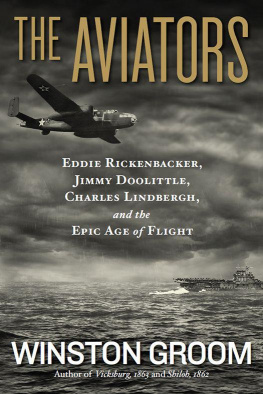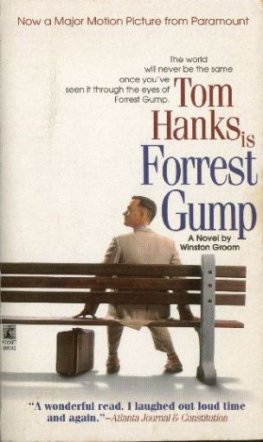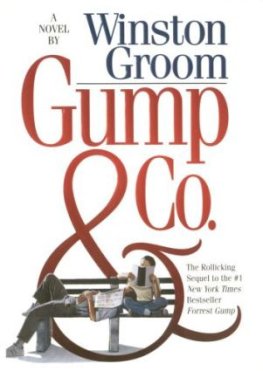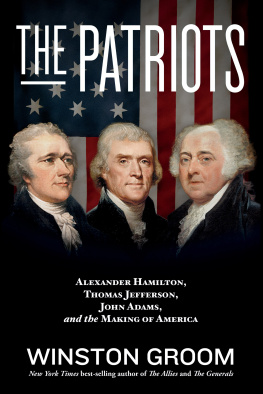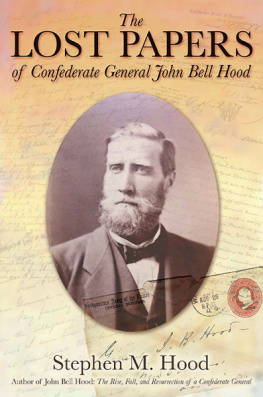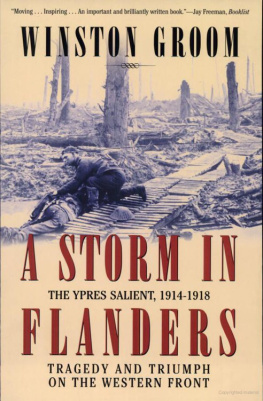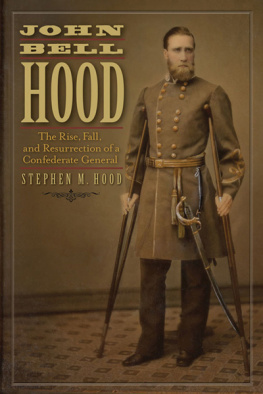Bibliographical Note on Sources
In the writing of this book I am earnestly and deeply indebted to those dogged historians who have gone before. In focusing on a microcosm of the Civil Warthose last six months of 1864 in the west between the battle of Atlanta and the battle of Nashvillemuch information had to be located and sifted. No writer on the Civil War can do his work in a void, and to that end I cut my teeth early on Bruce Cattons fine books The Coming Fury, Never Call Retreat, A Stillness at Appomattox, Terrible Swift Sword, and This Hallowed Ground as general literature. I am equally indebted to Shelby Footes monumental three-volume narrative, The Civil War: Fort Sumter to Perryville, Fredericksburg to Meridian, and Red River to Appomattox. The epic works of these two authors give shape, dimension, and perspective to what is arguably the most complex subject in American history. I would have been lost without them.
As an outline for the overall Atlanta-to-Nashville campaign, one must inevitably begin as I did with the greatest single source for anyone seriously interested in the Civil War, which is War of the Rebellion: A Compilation of the Official Records of the Union and Confederate Armies. This huge undertaking, gathered, organized, and published by the U.S. government between 1880 and 1902, is composed of 128 volumes containing over 100,000 pages of official battle and campaign reports, correspondence, telegraphic messages, orders, letters, tables of organization, statisticsevery scrap of paper generated by the Union and Confederate armies that could be located. It provides the blueprint for any historical study of the various aspects of the war.
Also immensely useful as a guide through the hundreds of battles and major skirmishes is the four-volume series Battles and Leaders of the Civil War. In this 1887 collection, published by the Century Company, are the voices of the men, mostly officers, recounting firsthand experiences of the great battles of the war.
On the particular subject of the 1864 Tennessee campaign, there are a number of fine works published over a hundred-year span that deal with the subject in greater or lesser depth, and I have learned much, and appreciate much, from these. Among them are T. B. Van Hornes Army of the Cumberland; Thomas Hays Hoods Tennessee Campaign; Stanley Hornes The Decisive Battle of Nashville and The Army of Tennessee; James McDonough and Thomas Connellys Five Tragic Hours, as well as Connellys Autumn of Glory; General J. D. Coxs The Battle of Franklin; Richard McMurrys Two Great Rebel Armies; Sims Crownovers The Battle of Franklin; Page Smiths Trial by Fire; James McPhersons Battle Cry of Freedom; Herman Hattaway and Archer Joness How the North Won:A Military History of the Civil War; Allen Nevinss The War for the Union: The Organized War; Francis Millers (ed.) The Photographic History of the Civil War; J. T. Headleys The Great Rebellion; and Clifford Dowdeys The Land They Fought For.
Of the lives and backgrounds of the major players there are some excellent accounts, and I owe them deeply for their insights and information: Lloyd Lewiss Sherman; John F. Marzaleks biography Sherman: A Passion for Order; Richard McMurrys John Bell Hood and the War for Southern Independence; Richard Dyers The Gallant Hood; Irving Bucks Cleburne and His Command; Howell and Elizabeth Purdues Pat Cleburne, Confederate General; T. B. Van Hornes The Life of Major-General George H. Thomas; Freeman Cleavess The Rock of Chickamauga; Christopher Lossons Tennessees Forgotten Warrior: Frank Cheatham and His Confederate Division; Brian S. Wills A Battle from the Start: The Life of Nathan Bedford Forrest; and Horace Porters Campaigning with Grant.
For political overview and specifics about the government officials and the various doings in Washington and Richmond, there was Carl Sandburgs two-volume opus Abraham Lincoln; Stephen Oatess With Malice Toward None: The Life of Abraham Lincoln; Steven Woodsworths Jefferson Davis and His Generals: The Failure of Confederate Command in the West; William C. Daviss Jefferson Davis: The Man and His Hour; as well as my old college professor Hudson Strodes Jefferson Davis: Tragic Hero.
And then there are the autobiographies by the players themselves. For the personal recollections and documentation of Shermans movements before, during, and after Atlanta, as well as his biographical history, The Memoirs of General W. T. Sherman is a prime source of information, as is the Personal Memoirs of U. S. Grant. John Bell Hoods Advance and Retreat contains a wealth of similar material. Likewise, General John Schofields Forty-six Years in the Army, General James Wilsons Under the Old Flag, General David Stanleys Personal Memoirs of Major General D. S. Stanley, and Jefferson Daviss The Rise and Fall of the Confederate Government were extremely useful, although like most memoirs, they are self serving to a greater or lesser extent.
For biographical information on the various subordinate generals in this contest, Ezra Warners indispensable two-volume work Generals in Gray and Generals in Blue is one of the most commendable examples of historical research extant. Over a period of years, Warner researched, compiled for the record, and published the biographies and photographs of every Confederate and Union general officer who served in the Civil War, of which there were more than a thousand. These books represent nothing less than a historical labor of love.
Regarding the various accounts of this campaign by soldiers in the ranks, I have relied on an abundance of information from books, diaries, letters, newspaper stories, and other commentary published by the participants. A chief source of many firsthand accounts I found is The Confederate Veteran, a monthly magazine published in Nashville from 1893 to 1933, when the last of the old soldiers were dying away. The magazine was founded and edited by Sergeant-major S. A. Cunningham, one of the participants in the Tennessee campaign. This invaluable tool, now bound in forty volumes with an index, contains letters written not only by thousands of Confederate participants in the contest but by Union soldiers as well, making for some lively exchanges. Also contained therein are such gems as the accounts of the battle of Franklin by the schoolchildren Harding Figures and Frances McEwen, who, in their golden years, at last found a place to contribute their recollections. Likewise, the Southern Historical Society Papers, as well as the historical society papers of various states, especially Tennessee, provided goodif difficult to ferret outfirsthand accounts, such as the diary of Captain E. T. Eggleston, who recorded in the Tennessee Historical Society Quarterly the hardships of Hoods march in the cold from the Tennessee River to Columbia.
There are also some very useful general books that include contemporary accounts of the campaign, most of them published about the turn of the century. Among them are William Murrays History of the Twentieth Tennessee Regiment, Bromfield Ridleys Battles and Sketches of the Army of Tennessee, and Stanley Hornes Tennessees War, which appeared during the Civil War Centennial in 1965. Also, David Logsdons well-done Eyewitnesses at the Battle of Franklin and Larry Daniels fine book Soldiering in the Army of Tennessee were both very helpful.
The Reverend W. A. Keesys


